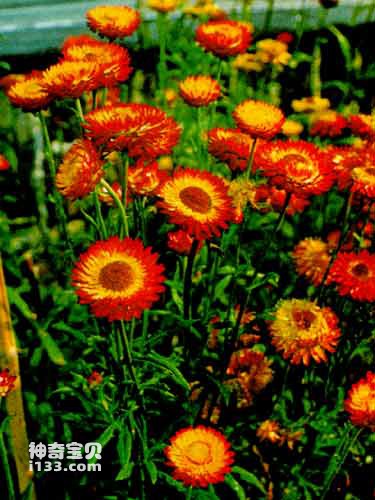If you go to the botanical garden to play, you will definitely be attracted by the various colorful flowers there; every spring, accompanied by the warm spring breeze, flowers of all sizes bloom in the fields, hillsides, courtyards and roadside. It makes people feel the breath of spring the most. As creatures living in the new generation, humans are lucky. We can not only enjoy the food provided to us by various plants, but also enjoy the beauty brought to us by flowers. Therefore, humans have been particularly interested in flowers since ancient times. Under the pens and knives of artists, flowers are always a theme they depict or carve; in the works of poets and writers, there are always endless words and phrases to praise flowers. For botanists, flowers are also the focus of their research, and are even used as a term in taxonomy - the name "flowering plants" has long been used as a synonym for seed plants, including gymnosperms. and angiosperms.

The "flower" in "flowering plant" refers to the "perianth" or "sporophyll group", but in fact, ferns already have sporophyll groups, while gymnosperms do not have real perianths. Therefore, strictly speaking, "flowering plants" do not really represent seed plants, so this name is gradually no longer used. But it is precisely because the flowers of angiosperms have a true perianth that they become the most important organ that distinguishes them from other plants. Therefore, when people mention flowers, they often think of this large group of angiosperms classified by botanists. Moreover, it is precisely because angiosperms possess various progressive characteristics, including progressive flowers, that they have become the most dominant group in the plant kingdom from the beginning of the Cenozoic era until modern times. It can be said that angiosperms are the best among flowering plants, and also the best in the entire plant world.
So, where are the “best” angiosperms?
Like gymnosperms, angiosperms reproduce sexually through seeds. The difference between the two is that the megasporangium (ovule) of gymnosperms is naked, and the seeds that will develop later are also naked without coating; while the ovules of angiosperms are wrapped in the ovary, and the ovules will later develop. The seeds and ovaries develop into fruits, and the seeds are wrapped inside the fruits and no longer exposed. This difference is the most important difference between these two types of plants, and thus became the origin of the names of gymnosperms and angiosperms. And this difference itself already reflects the more progressive characteristics of angiosperms than gymnosperms - protected seeds are more conducive to dissemination and development into a new generation of plants.
In addition, angiosperms also have a series of other advances.
As reproductive organs, the sporophyll balls of gymnosperms look very much like their flowers, but compared with the flowers of angiosperms, they are much more primitive. They either have only pistil groups or only stamen groups, and are generally just spherical bodies made up of fruit scales (such as cones of pine trees). During the Permian, some gymnosperms also had perianths, but this perianth was much simpler than that of angiosperms. The flowers of angiosperms originate from the sporophyll balls of gymnosperms, but are much more advanced than the sporophyll balls. A typical angiosperm flower consists of a calyx, a corolla (the two are collectively called the perianth), stamens, and pistils. The corolla is composed of petals, which are formed by the degeneration of small sporophylls. The cells of the petals contain a variety of anthocyanins and aromatic oils, so the flowers are brightly colored, colorful, and fragrant. There are also nectaries at the base of the petals, which secrete sweet and fragrant sap, which adds to the fragrance of the flower. The bright colors and fragrance of flowers can attract the visit of various insects; while insects search for, pick or absorb nutrients from flowers, they also pollinate the plants. Since then, in addition to wind pollination, there has been an effective way for sexual reproduction in the plant world. This pathway actually embodies the establishment of a mutually beneficial relationship between plants and insects. This mutual benefit allows plants and insects to co-evolve. On the one hand, it greatly increases the biodiversity in the ecosystem, and on the other hand, it provides opportunities for angiosperms and insects. The evolutionary development has opened up a broader road.
In addition, angiosperms have shown progress in many processes of genetics, development, and structures such as stems and leaves.
animal tags: angiosperms
We created this article in conjunction with AI technology, then made sure it was fact-checked and edited by a Animals Top editor.